Beautiful science
Categories: Exhibition
By Pictolic https://pictolic.com/article/beautiful-science.htmlAnnual Art of Science, held at Princeton University, shows the interaction of science and art. This image of "Chaos and geomagnetic inversion" won the 2011 contest. Over the past 160 billion years of the Earth's magnetic field was several times changed the polarity. Such changes are chaotic and irregular.
(19 photos)
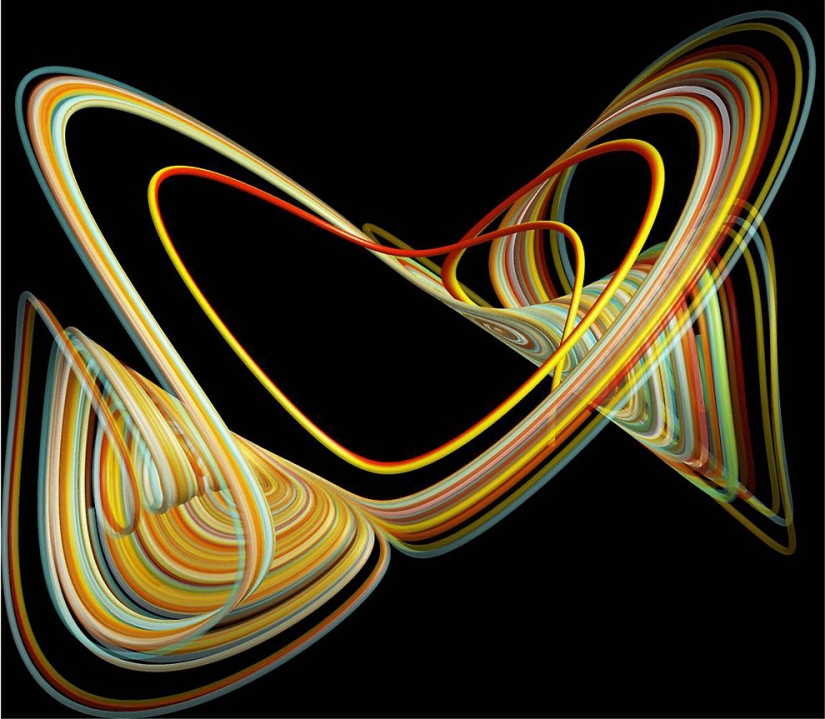

1. In the photo – deterministic model of change of the magnetic field of the Earth. (Christophe Gissinger / Dept. of Astrophysical Sciences/ Princeton Plasma Physics Laboratory)
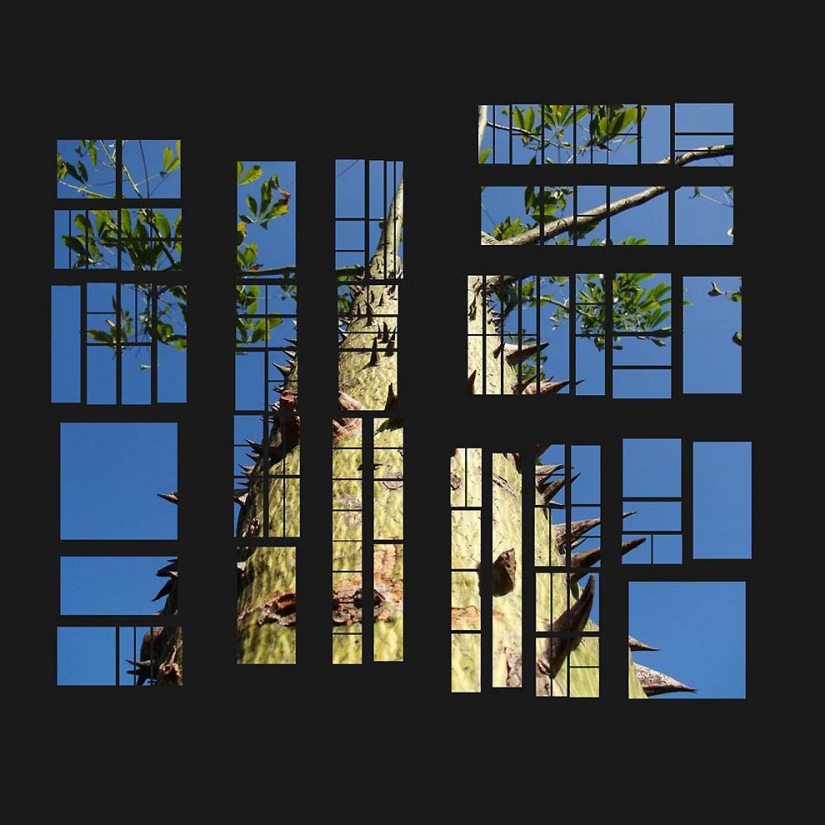
2.Photograph of the Wives of James Qian got the second place. It is an illustration of his research on the algorithm of division of an image. "The algorithm used here, assumes a recursive division of an image into rectangular pieces," says Qian. "Each rectangle evenly divided into two vertical or horizontal. The result is a variety of rectangular slices, arranged in a dyadic tree." (Zhen James Xiang / Dept. of Electrical Engineering)
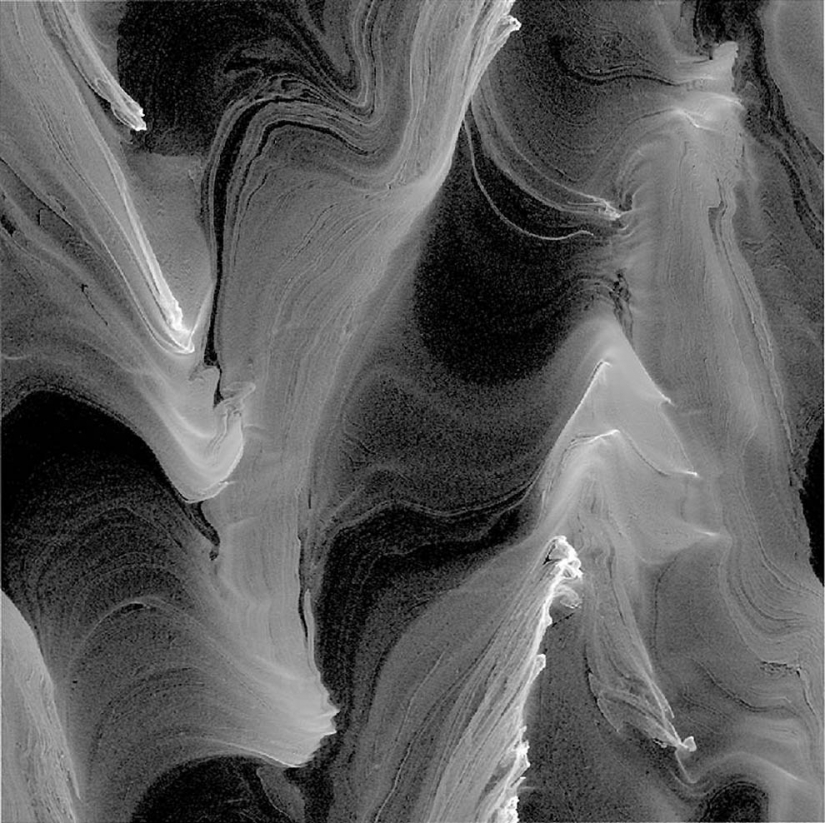
3. Planets are formed through coagulation of the dust particles in a gaseous protoplanetary disk, where the mass of particles increases by more than 40 orders of magnitude. An important step is the formation of planetesimals from small stones. This image depicts the process: aerodynamic interaction of the gas and of stones helps to seal the fragments and building sizes. These blocks become building material, from which is created the planet. Photo simulation of hydrodynamic processes in the protoplanetary disk got third place. (Xuening Bai / James M. Stone (fac) Dept. of Astrophysical Sciences Planets)

4. A solution of sulphide of arsenic creates bright spots by heating the thin layer on the glass. (Yunlai Zha / Dept. of Electrical Engineering)
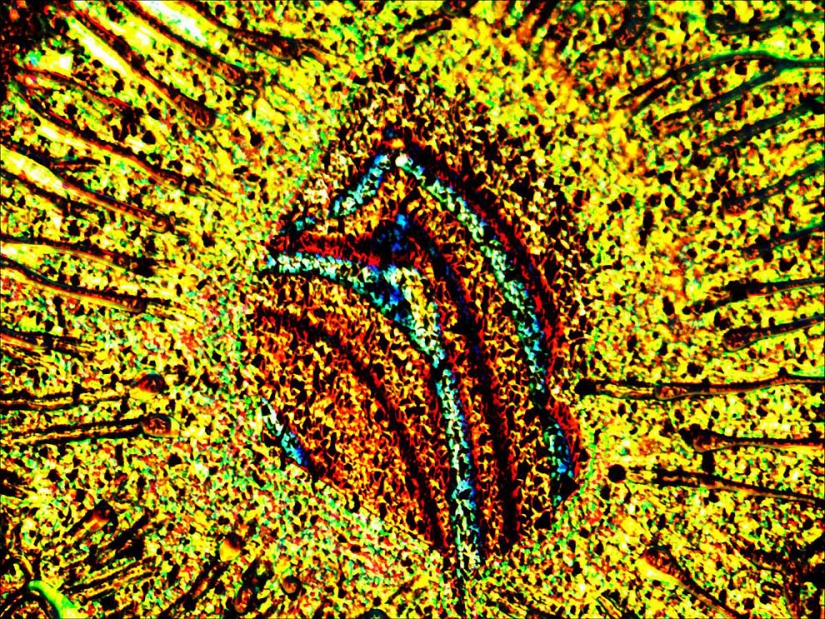
5. Another photo of the heated solution of sulphide of arsenic. Reminiscent of a tropical fish from disney cartoons. (Yunlai Zha / Dept. of Electrical Engineering)
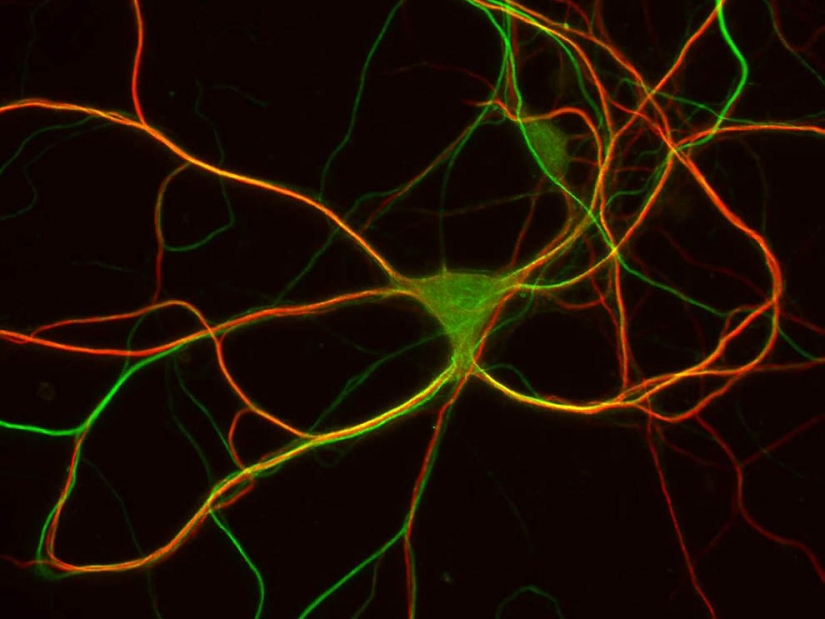
6. A pyramidal neuron from the hippocampus, the part of the brain which formed some memories. Green color depicts the microtubules, creating a structural network inside the neuron, and the red insulin receptor, protein surface of the cell, which connects the neuron to other neurons. These connections are called synapses, become stronger or weaker when recording events in memory. (Lisa Boulanger / Dept. of Molecular Biology and Princeton Neuroscience Institute)
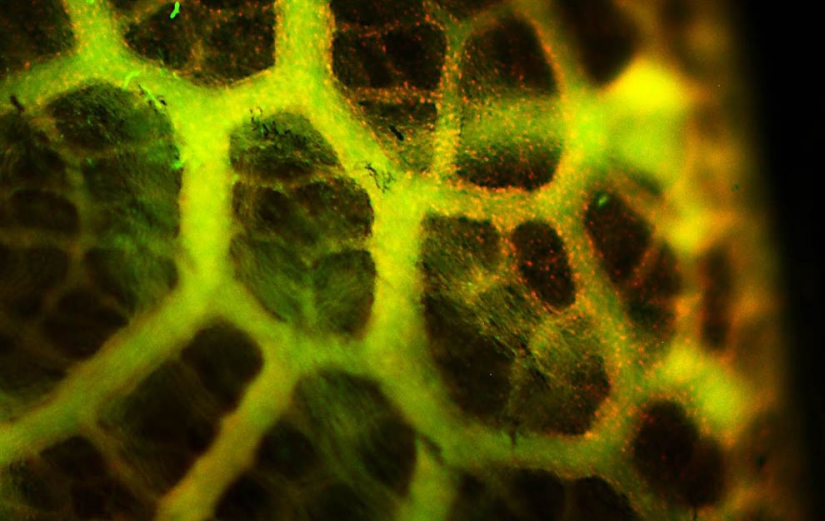
7. Immunofluorescently the surface of the lungs of the embryo bearded Agama (lizard). The image shows the formation of vessels in the embryo, the cell nuclei are shown in red, sheath cells green. (Celeste Nelson / Dept. of Chemical and Biological Engineering)
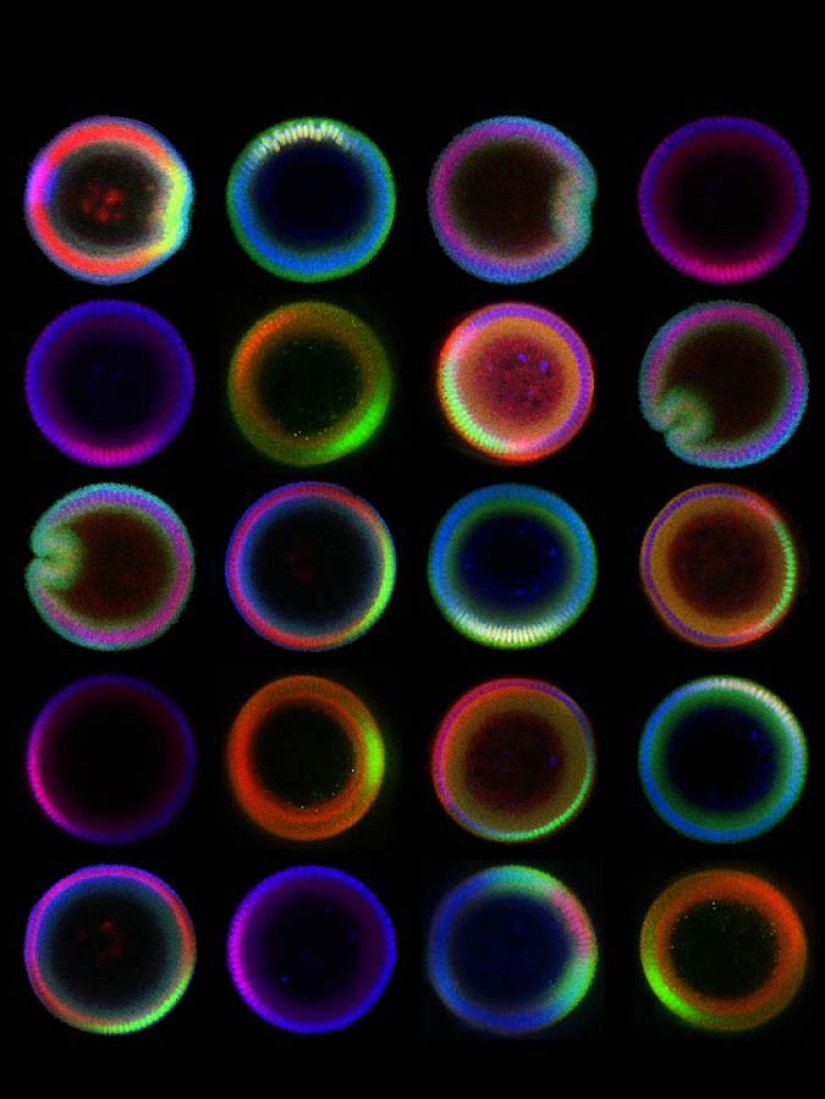
8. (Yoosik Kim, Stanislav Shvartsman / Dept. of Chemical and Biological Engineering)
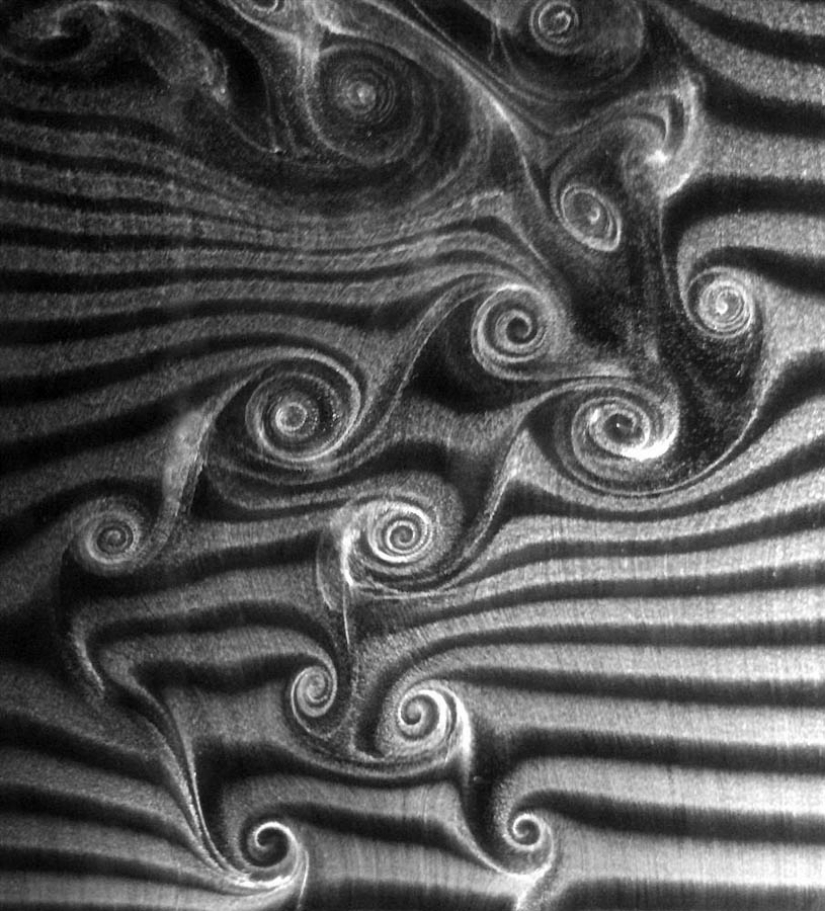
9. (Birgitt Boschitsch, Peter Dewey, Alexander Smits / Dept. of Mechanical and Aerospace Engineering)
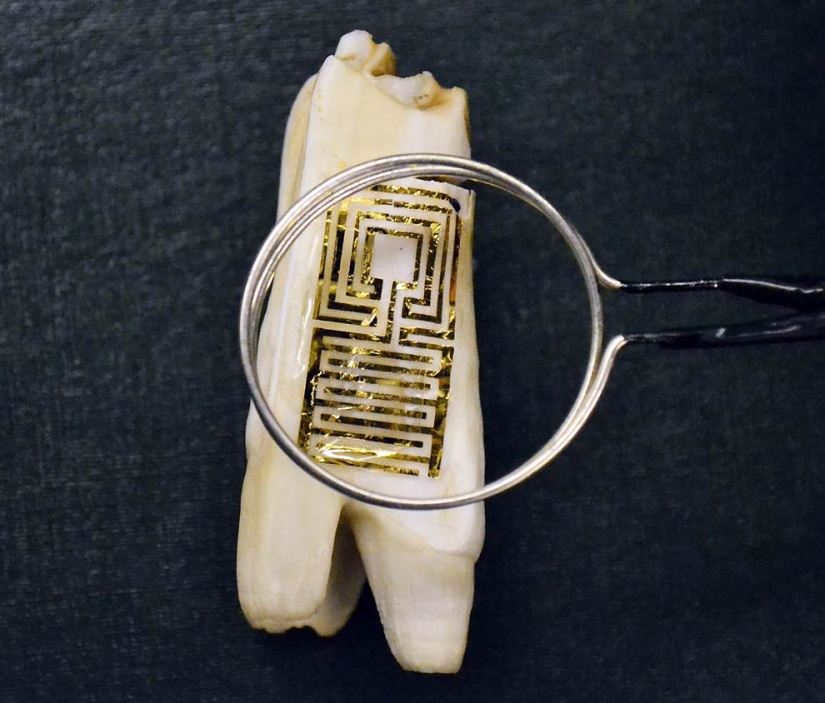
10. Wireless sensor on water-soluble basis, is transferred to the tooth of a cow by dissolving the basics of water. Graphene layer of the sensor located under the electrodes, reacts to a bacterial infection. The data from this sensor can be read wirelessly .(Manu Sebastian Mannoor, Michael McAlpine / Dept. of Mechanical and Aerospace Enginneering)

11. Ferrofluid – a liquid containing fine particles of a metal possessing ferromagnetic properties. Ferrofluid is used in electronics, space technology, and medicine, but are also a great three-dimensional model to visualize the magnetic field. The peculiarity of ferrofluid in that it has properties of liquid and solid at the same time. The status of this substance depends on the presence or absence of a magnetic field. And "water" and "Lotus" on its surface is one and the same substance. (Elle Starkman / Princeton Plasma Physics Laboratory)
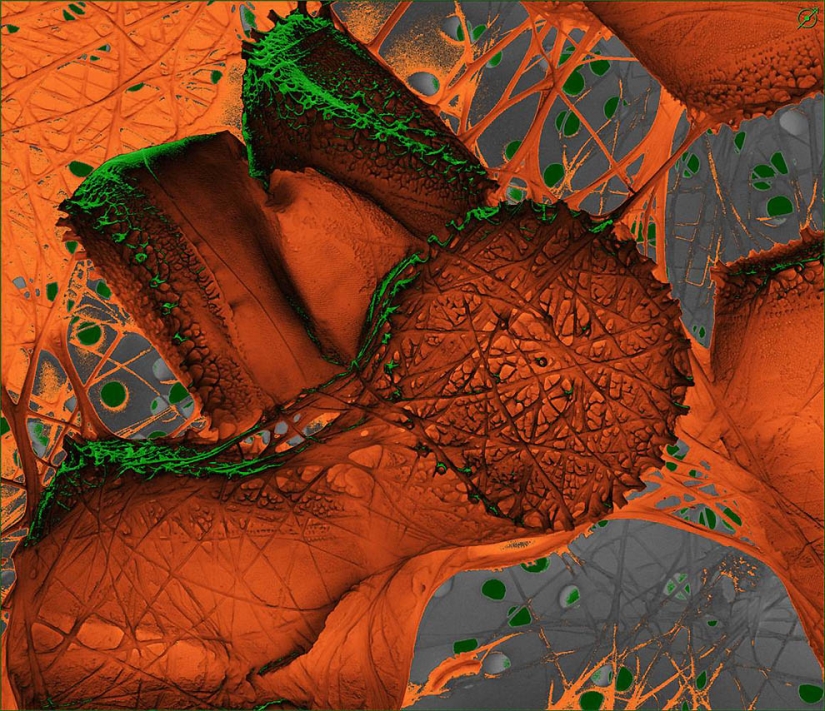
12. This marine organism with a size of 15 microns was photographed with an electron microscope PRISM, which makes the black-and-white pictures. Later you can assign a grayscale color as orange and green in the picture. (Nan Yao, Gerald Poirier, Shiyou Xu / PRISM Imaging and Analysis Center)
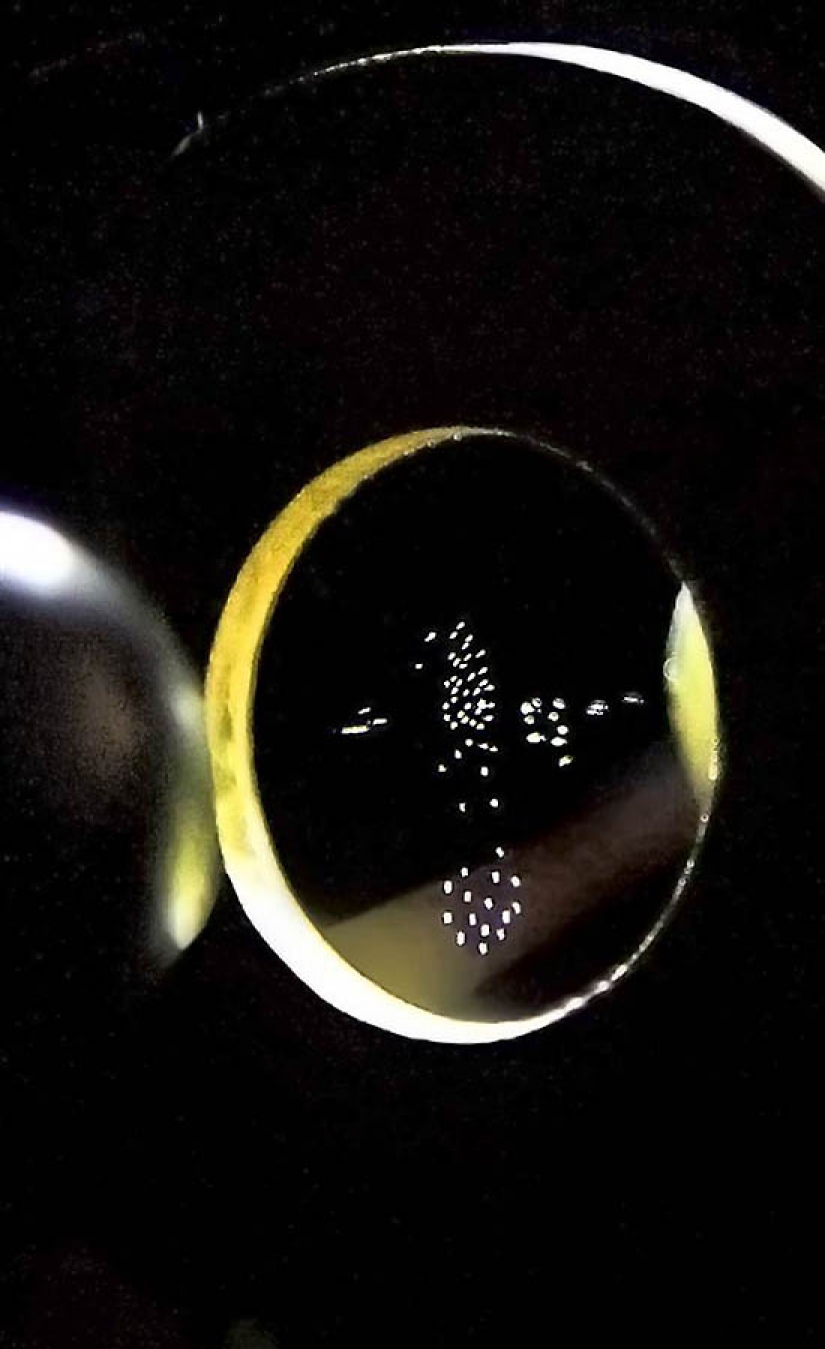
13. To understand what it consists of substances in nature, scientists build particle accelerators, which push the particle beams. To simulate the behavior of the particles are small boosters. This table model was created using a ring stand from a chemistry lab, two metal spheres and a power source. Charged dust particles are placed in the space between the ring and the spheres, and repel or attract depending on power surges. Because of the gravity of the dust particles do not have time to respond to changes in voltage and simultaneously repelled and attracted, that is, fall into the trap. (Photo by Elle Starkman, Joe Caroll, Gary Stark and Andy Carpe Erik Gilson.)
14. The top picture shows how one large spotted nymphalid sees each other with different distances. Right at the top of the one butterfly sees another from a distance of 18 cm, bottom left – a distance of 7 centimeters. Right bottom photo. At a distance of 18 inches with a smooth eye movement occurs the phenomenon of the coincidence of spots on the wings with the facets of the eye of a butterfly. Maybe that's why it was at such a distance is their "mating dance". (Henry S. Horn / Dept. of Ecology & Evolutionary Biology)
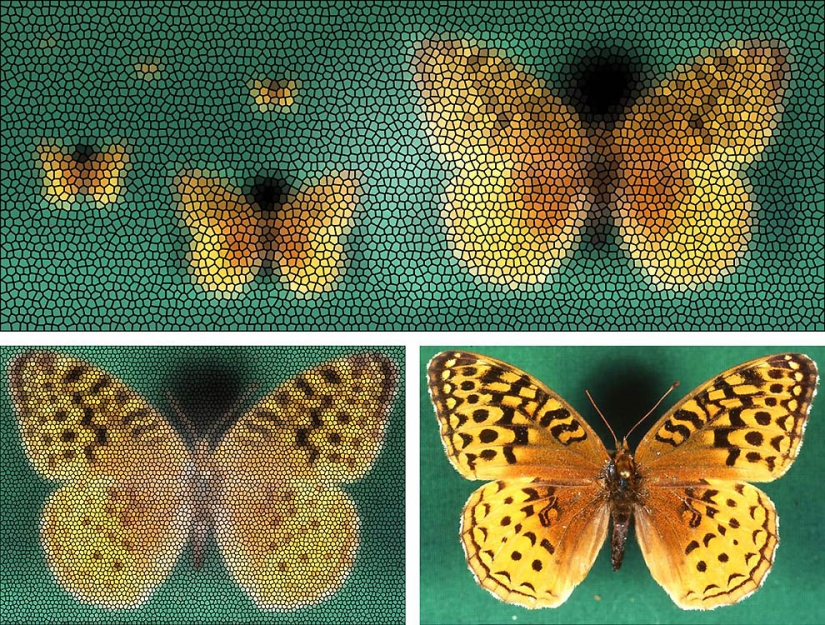
15. Photograph of a superconducting coplanar lines made with a microscope with a filter of red light. Star dust at the bottom of the tubes – actually the impurities on the surface of the conductor, appearing in its production. (Devin Underwood, James Raftery, Will Shanks / Dept. of Electrical Engineering)
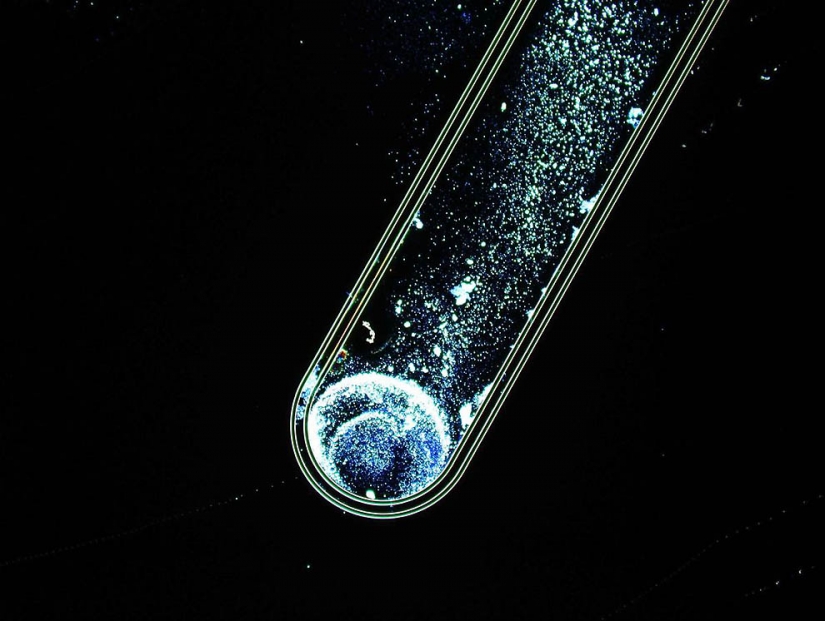
16. Hybrid nano-solar cells provide the possibility of efficient conversion of solar energy into electrical energy. Nanostructures of zinc oxide can have a very wide application, but it is important to control their size and position for the production of efficient nano-devices. This is a micrograph of nanostructures of zinc oxide, created using low-temperature hydrothermal methods. This is far from ideal agencies are nano-matrix of the ideal configuration, which look much more boring. (Luisa Whittaker and Yueh-Lin "Lynn" Loo / Department of Chemical and Biological Engineering)
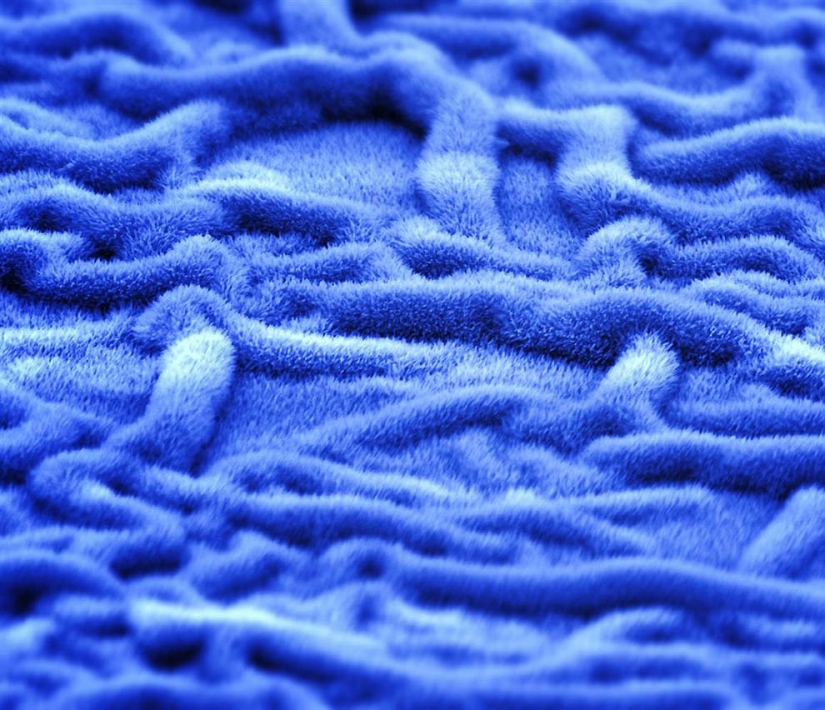
17. Pictures from caustic lighting glass kettle from different angles. In the centre the light falls at an angle of 90 degrees, then 75, 60, 54, 30 and 15 degrees. The farther from center the smaller the angle. That is, in the picture in the top left corner, the light falls almost horizontally in the bottom right. (Rafi Romero / 2012 Dept. of Computer Science)

18. Beautiful geometric curves are everywhere around us – in the clam shells and the shapes of galaxies. The photo is part of laser. "By combining helical and direct semiconductors, we got a design which simplifies the quantum cascade and, perhaps, other types of lasers," said Peter Liu. "Photo – view the laser from above. The surface of the device covered with gold for better conductivity of current". (Peter Q. Liu / Dept. of Electrical Engineering Spirals)
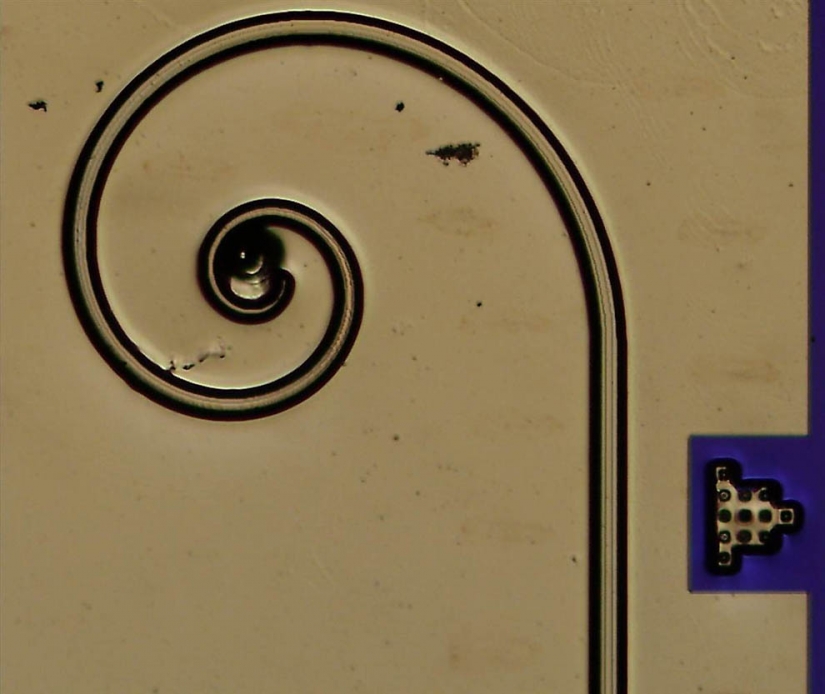
19. Simulation of space around the black hole. The output stream of the substance is caused by magnetic fields, which prevent the fall of matter onto the surface of a black hole. The dot in the center is the black hole. Gray lines show the flows of matter, red – magnetic lines, and the green borders between attract and repel matter. (Alexander Tchekhovskoy, Ramesh Narayan, Jonathan C. McKinney / Princeton / Harvard / Stanford)
Keywords: Art | Contest | Micro photos | Insects | University | Physics
Post News ArticleRecent articles

In the fall of 1972, Bill Yates traveled through the countryside in the vicinity of Tampa, Florida. At that time, he was studying ...

Severe cold weather does not give up its positions. We offer you to admire the magical photos of winter Europe, because snow and ...
Related articles

These artists love cats, but also masterfully draw them, often complementing funny and life signatures. Meet! --> Russian ...

Photography has the magical ability to catch the moment before it disappears. American a self-taught photographer Lauren Shipman ...

Is it possible to laying wood to name a form of art? Turns out you can. Because in the world there are such people, which gently ...

Vladimir Lyubarov is an artist from the countryside who paints pictures of real life. But he brings amazing characters, birds, and ...